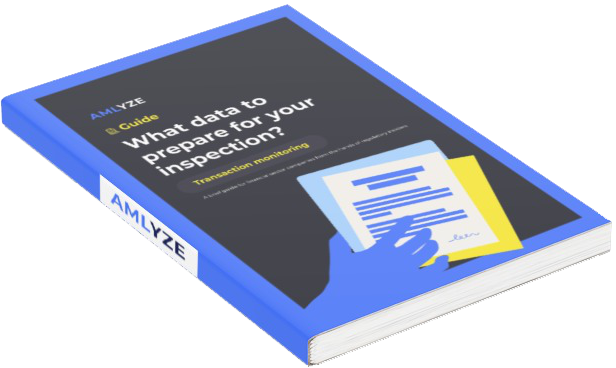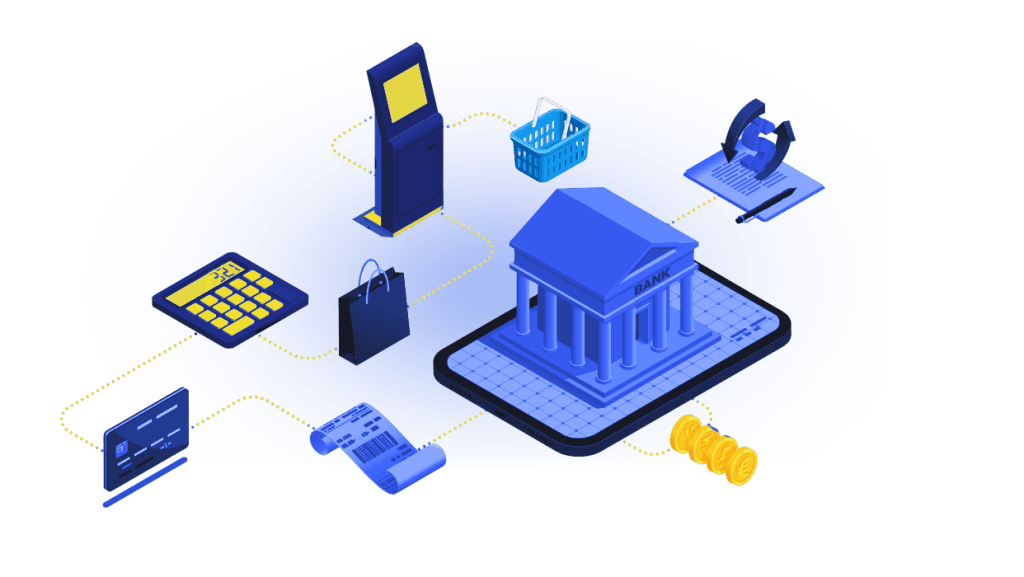Banking as a Service, or BaaS, model has gained significant attention in recent years. And particularly within the broader theme of embedded finance.
The popularity of these themes is logical. The growth of technology has created huge opportunities for the integration of financial services into non-financial offerings.
Times have changed. And if you’re a ride-hailing service like Uber, that doesn’t necessarily mean you own a fleet of cars. But it also doesn’t necessarily mean that you can just manage an app. Uber, for example, is also a licensed (EMI) fintech. As such, it offers in-app payment and financial services to both customers and drivers.
Explanation of BaaS
Embedded finance is usually described as the wide range integration of banking and other financial services into non-financial applications and services.
And when it comes specifically to BaaS, a subset of embedded finance, it is a business model that allows non-bank companies, ranging from technology companies to start-ups, to provide better access to their services by partnering with financial institutions and providing their customers with access to the financial services offered by financial institutions through API technology or platforms. In other words, a BaaS model is a subset of Software as a Service (SaaS) applied to financial services.
It is worth noting that financial services are provided only by licensed financial institutions (institutions that have tried to explain otherwise have already attracted the attention of the supervisory authorities). However, the way financial services are delivered can be different – it can be done through a series of intermediaries and agents. And this is where the Banking as a Service model comes in.
Benefits it brings
Thanks to BaaS, a company can emded financial services to its product with just a little programming. In other words, BaaS removes the need for high up-front investment costs. And it allows fintech startups to do what they do best. Build quickly, iterate, and disrupt financial services.
Some of the key benefits of BaaS services include:
- Focus on your core business
- Increase customer confidence
- Increase product range
- Improved user experience
- Access to more customer data

Affected sectors
It is not true that BaaS is a disruptive business model. What is true is that it allows non-financial institutions to embed financial services into their daily operations by working closely with financial institutions. This potentially reduces the burden on customers to apply for financial services directly through the financial institution. Imagine you are ready to buy a new car. You go to a car dealer. They offer you a lease as a financial service. Just to speed up your car purchase. You sign all the papers. Then they transfer them to a financial institution that provides a leasing service. But still at the car dealer’s premises. This is a simplified version of BaaS (there are more complex models today). Although it shows how it affects the traditional financial infrastructure.
BaaS allows companies (merchants, e-merchants, fintech companies, etc.) to expand their product offerings. And also reach a broader customer base by providing access to financial services in a customer-friendly way. The Banking as a Service model also allows technology companies to integrate financial services into their platforms. This enhances their value proposition and potentially increases customer loyalty.
Overall, the BaaS model has the potential to help to evolve multiple sectors within the financial services industry and beyond.
Value for non-financial businesses
For the non-financial businesses, Banking as a Service model can bring many benefits. By partnering with a BaaS service provider, you can help your customers to access to a wide range of financial products offered by your banking partner.

Most often BaaS model service provider can help to access to these categories of financial services:
- Payment cards. Whether physical or virtual, debit, credit, and charge cards can empower your customers to make purchases conveniently. Whether online or in-store. They not only enhance customer acquisition, engagement, and retention but also open the possibility of earning interchange revenue, offering a valuable revenue stream for your business.
- Payment services. Payments encompass the movement of funds in and out of bank accounts. Banking as a service can facilitate various payment methods such as cards, wires, and internal transfers within the same bank.
- Bank accounts. These accounts form the cornerstone of most banking services, facilitating both deposits and withdrawals, as well as enabling payments. An important advantage they hold over alternative solutions like digital wallets is the potential for insurance coverage from different jurisdictions deposit insurance schemes.
- Lending and financing solutions. Supporting your product by helping your customers to access additional funds beyond their existing bank balance, such as leasing, credit, invoice factoring by partnering with a financial institution. It could help increase the attractiveness of your own product.
Practical implementation aspects
Products mentioned above allow non-financial companies to do what they do best. And to focus on their core business and develop superior services. While the complex and regulatory aspects are managed discreetly in the background by the financial service providers.
Of course, it takes business to do the maths. And answer the important questions. For example, will there be a fee from the BaaS platform? Will they charge on per account basis? How much it will cost to process different types of payment? How it will affect your overall customer acquisition cost (CAC).
Some BaaS providers can take 9-16 months and a large team to launch embedded banking. Others can do it in 3 months with a smaller initial investment. When evaluating a potential partner, be sure to ask about the components you’ll need to develop. And the level of staff support required. Ask for a reliable timetable for implementation. And check on previous successful implementations by other companies.
It’s important to work with a bank or institution that has a good reputation. And one that won’t tarnish your brand image with scandals or security breaches.
Possibilities for FIs
Financial institutions (FIs) and distributors could achieve significant revenue growth by adopting BaaS business models and sharing the fees, according to research by Oliver Wyman, a US-based management consulting firm.
In a study conducted in the Asia-Pacific region in late 2020, the consultants examined the BaaS opportunity in selected markets for a range of financial products: retail lending – such as virtual credit cards and buy-now-pay-later services; SME lending – such as working capital loans and trade finance; deposit services – such as current and multi-currency accounts; wealth management services; and insurance products.
It generated viable business scenarios with potential distribution partners, including e-commerce platforms, retailers, conglomerates, lifestyle services and healthcare providers.
And the study showed that every customer who buys a financial product on the digital platform has the potential to generate between $100 and $250 in financial services revenue. If between 4 and 5 percent of the digital platform’s customers purchase a financial product through it (a conservative estimate), the arrangement would generate between $5 million and $13 million in revenue per million customers. In an 80-20 revenue sharing arrangement, the financial institution would gain $4-10 million in revenue and the distributor (digital platform) would gain $1-3 million.
Study by Deloitte
Another study by Deloitte, an audit, tax and advisory firm, also found interesting facts. It showed that banks that focus on providing BaaS services can double their return on average assets (ROAA). This highlights the potential of this area.
Deloitte also points out that smaller banks and fintechs initially dominated the BaaS market. But incumbent banks are now starting to wake up to the potential. Recent entrants include BBVA and Goldman Sachs.
Challenges for BaaS providers
There are a number of things that any BaaS service provider should consider. If you’re going to provide this kind of intermediated financial service, you’d better have a rock-solid set of internal controls in place. And leave no room for contractual interpretation as to who does what (between you and your agents/distributors) in terms of risk management and, in particular, AML/CFT controls.
This attitude on the part of the regulators has been demonstrated on many occasions by the fines imposed. They have been imposed on a large number of payment service providers (Solaris in Germany, Railsbank/Payrnet in Lithuania, Goldman Sachs Transaction Banking in the United States or Modulr in the United Kingdom).
Penalties and even the withdrawal of licences were a clear sign of the growing concern among European regulators. Concern about the financial crime risk posed by the different levels of intermediation and trust arrangements in this business model.
In most agent/distributor relationships, the risk mitigation and overall compliance part is defined by mutual agreement. This states that the client (agent, distributor) will implement controls that are (at least) equivalent to the standards of the financial institution that it partners with.
The financial institution entering into the BaaS-like relationship should therefore bear in mind that it is primarily responsible for ensuring all AML/CFT compliance across the entire BaaS network. And in the event of a regulatory inspection, it is the financial institution that is fully responsible for compliance procedures.
AMLYZE attitude towards BaaS
The Banking as a Service model is becoming firmly established in the financial landscape. Across Europe, BaaS is playing a key role. For example, in the launch of numerous challenger banks and fintech companies offering digital wallets and payment cards. In addition, BaaS is evolving into embedded finance, the natural evolution of APIs within banking services.
AMLYZE understands that the BaaS model is the future of financial services. That is why we have launched a service specifically designed to meet the needs of BaaS service providers.
Our solution allows FIs to manage BaaS model in an effective and efficient way. It enables to maintain full control over their risk appetite and regulatory risk. And also to gain visibility into the activities of their customers’s customers (end users). At the same time, it ensures that customers and partners always comply with AML/CFT standards and regulatory requirements.
Significant fines or even loss of licence. It arises for financial institutions that have whitelisted their BaaS model and left the financial intermediary network unmonitored. A real-time view of your customers’ transactions across the entire intermediary network is how regulators expect you to manage your risk appetite. Well, that’s exactly the aim of the solution we have developed for Baas providers. Click here for a full list of industries where AMLYZE solutions can be used.
Brings the CaaS model closer
On the other hand, imagine you are a company looking for a BaaS provider. In this case, you can also count on AMLYZE to help you meet your own AML/CFT standards.
This model brings the so-called Compliance as a Service (CaaS) model closer to the needs of the business. It allows organisations to automate their compliance systems. And focus on their financial product offering.
FAQs
1. What is Banking as a Service (BaaS)?
Banking as a Service (BaaS), sometimes called Fintech as a Service (FaaS), allows any business to integrate financial services (accounts, payments, cards) into their day-to-day operations. This can be done by partnering with a financial institution.
2. Why is the Banking as a Service model getting popular?
BaaS models have long been a tempting way for companies to expand their service offerings to customers. Such as facilitating leasing agreements within the premises of a car dealership. However, as the technological landscape of financial services continues to evolve, BaaS models are experiencing a significant leap in development and a new wave of popularity. This surge can be attributed to a number of factors. Firstly, advances in fintech infrastructure, including API integration, have streamlined the process of implementing BaaS solutions, making them more accessible and cost-effective for businesses of all sizes. In addition, the growing demand for digital banking services and the rise of electronic money institutions, as well as so-called neobanks, have collectively fuelled the adoption of BaaS solutions. Fuelled as a way to gain an additional competitive advantage over traditional banks (while assuming all the additional service channel risks). Also, regulatory changes, such as open banking initiatives, have paved the way for greater collaboration between traditional FIs and third-party providers, further accelerating the expansion of BaaS.
3. How does BaaS work from a compliance and risk management perspective?
BaaS relationships do not change the fact that financial institutions are responsible for regulatory compliance. Financial services provided either directly or through the intermediary network are strictly licensed and supervised. Risk mitigation and overall compliance should not be defined solely by a mutual agreement that the agent or distributor will implement controls equivalent to the standards of the licensed financial institution. The level of compliance by the agent with the requirements of the licensed entity (and overall regulatory requirements) should be verified to provide the financial institution with comfort that it is complying with regulatory requirements. In practice, we observe that centralisation of AML/CFT controls, including transaction monitoring, is already becoming a regulatory requirement.
4. What is the regulator’s attitude towards BaaS?
In recent years, several heavyweight BaaS providers have had their licensed activities restricted by regulators (e.g. the Bank of Lithuania revoked the licence of PayrNet and Solaris SE, the German BaaS giant, also had its licensed activities restricted in the same way by the German regulator (BaFin)). One of the main concerns of regulators and supervisors is the lack of visibility of the licensed entity over the activities of its customers (sometimes referred to as end users by some financial institutions). A significant part of risk management is based on trust, and this is not how AML/CFT regulation works.
5. What is the key message for the BaaS model from AML/CFT perspective?
We’re seeing a surge in partnerships and collaborations between banks, fintechs and other companies, leading to a proliferation of BaaS solutions across multiple industries. But in the area of AML/CFT, it is necessary to know who your customer is and to whom you are providing financial services, and this is ultimately the responsibility of the financial institution (KYC or know-your-customer is one of the main cornerstones of AML/CFT regulation). This cannot be compensated by any contractual arrangements, ultimately the regulator will come after the financial institution.






